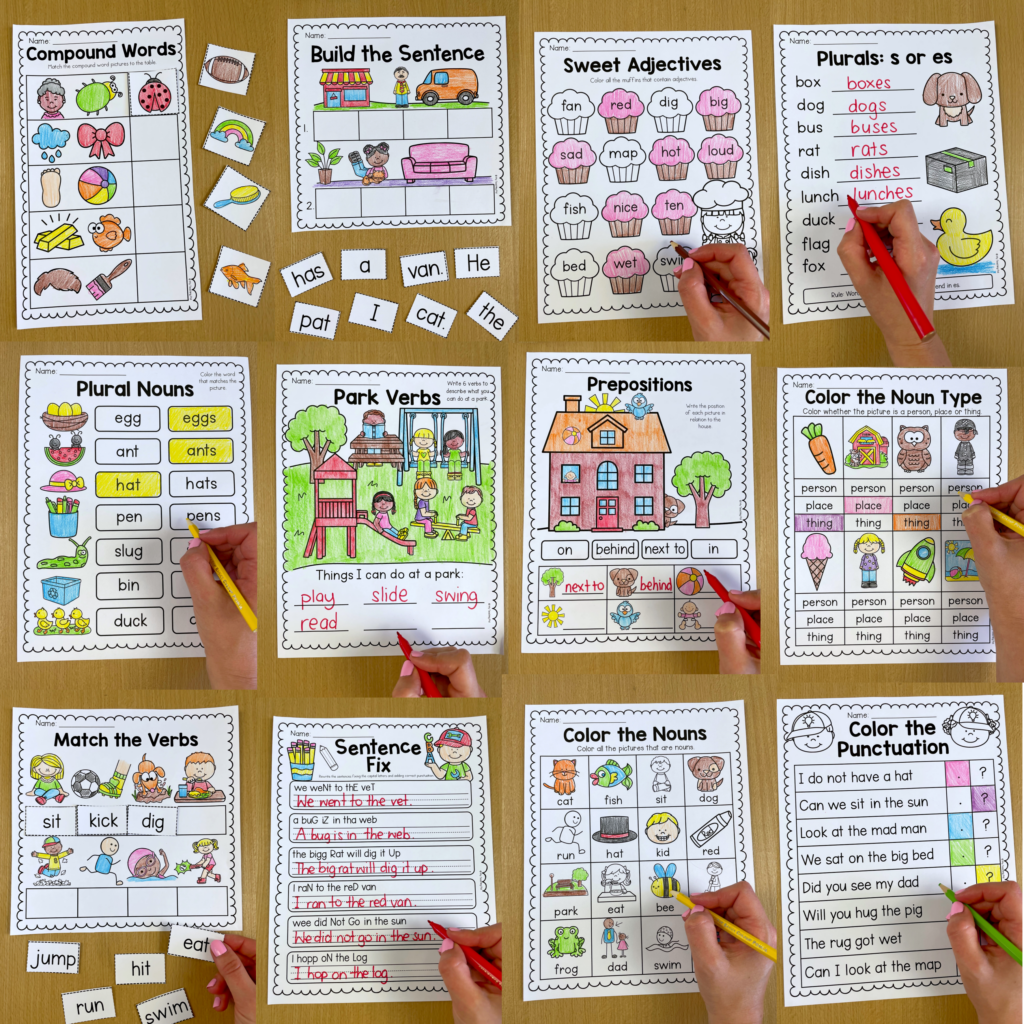
Have you been wondering which grammar skills are important to teach in Kindergarten? Although there are a wide variety of curriculums used not only across the USA, but the world, they are all similarly positioned regarding which grammar skills Kindergarteners need to learn to equip them with strong foundational skills in spoken and written English.
Here are the core Kindergarten grammar skills that your student should learn: (Please note: Your curriculum may slightly vary, as well as your students’ learning needs, so it’s always important to adjust your teaching accordingly.)
The Kindergarten student should be able to:
- Recognize that words are separated by spaces
- Distinguish the difference between a word and a sentence
- Understand that words are written from left to right and top to bottom
- Capitalize the first word in a sentence, the pronoun ‘I’ as well as names
- Use periods at the end of declarative sentences
- Name ending punctuation including periods, question marks and exclamation marks
- Begin using question marks and exclamation marks in writing with support
- Use complete sentences orally
- Write complete sentences in shared activities
- Expand complete sentences in shared activities
- Use verbs orally and in writing
- Use common nouns (person, place or thing) orally and in writing
- Use adjectives orally
- Form plural nouns orally that end in ‘s’ or ‘es’
- Begin using plural nouns that end in ‘s’ or ‘es’ in writing with support
- Use frequent prepositions orally (e.g., on, in, under, behind)
- Use the most frequently occurring inflections and affixes (e.g. -ed, -s, re-, un-, pre-, -ful, -less)
- Understand and use question words (e.g., who, what, where, when, why, how)
- Identify new meanings for familiar words and apply them accurately (e.g., I hit it with the bat, The bat can fly.)
- Relate verbs and adjectives to their opposites (antonyms)
- Discern the meaning between similar verbs (e.g., jog, run, sprint, trot, race) by acting them out.
You can download a free PDF copy of these Kindergarten grammar skills list here:
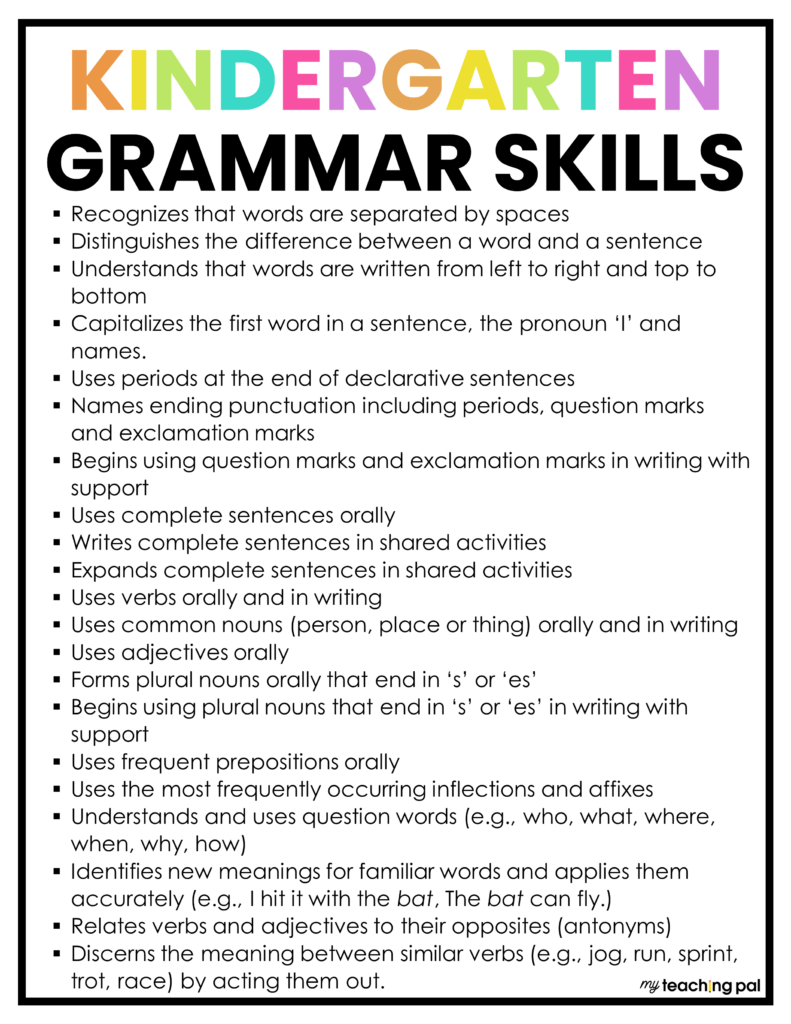
Download the FREE Kindergarten Grammar Skills List
KINDERGARTEN GRAMMAR ACTIVITIES
Here are some purposeful Kindergarten grammar worksheets and activities that you can use to teach Kindergarten grammar skills. These activities are derived from this Kindergarten Grammar Worksheet Packet that features 109 pages of fun, no prep, purposeful activities that are designed to fit seamlessly into your English Language Arts program.
The Kindergarten grammar topics covered include:
- Common Nouns
- Proper Nouns
- Pronouns
- Plurals
- Action Verbs
- Verb Tense
- Adjectives
- Sentence Structure
- Punctuation
- Synonyms and Antonyms
- Compound Words
- Compound Sentences
- Prepositions
- Multiple Meaning Words
- Contractions
Here is some more detail about these topic areas as well as snapshots of some fun Kindergarten grammar worksheets and activities that you can use with your students.
Common Nouns
A common noun is a word that describes a person, place, or thing. A common noun does not begin with a capital letter unless it is at the start of a sentence. Examples are:
Person: firefighter, teacher, baby, grandma, doctor
Place: beach, home, school, park, hospital
Thing: dog, pencil, crab, cloud, apple
Many educators prefer to teach nouns as one of their first grammar topics as they are the most concrete grammar concept and one of the easiest for Kindergarten students to grasp.
Proper Nouns
A proper noun is the name used for a particular person, place, or thing. It always begins with a capital letter. Examples are:
Person: Harry Potter, Miss Lee, Max, Susan, Taylor Swift
Place: McDonalds, Target, Africa, New York, Mars, Disneyland
Thing: Fluffy, Snickers, Friday, Ford, Monopoly, Pepsi, Valentine’s Day, June
Proper nouns are taught after students have a solid understanding of common nouns and can begin distinguishing between the two. Knowledge of proper nouns builds awareness regarding which words require capitalization in writing which is why they are important to teach.
Pronouns
A pronoun is a word that replaces a noun or noun phrase in a sentence. Examples of common pronouns include I, he, she, it, we, you, they. Here are some examples of how pronouns are used in a sentence:
Dan and I are going to the beach.
We are going to the beach.
Nina plants a red flower in the garden.
She plants a red flower in the garden.
I enjoy throwing a ball to the dog.
I enjoy throwing a ball to it.
We use pronouns so that we don’t need to continuously repeat words. They make writing coherent and succinct.
Plural Nouns
Plural nouns are used to show that there is more than one person, place, or thing. We usually add a suffix to the end of a noun to signify that it is in plural form. The suffixes commonly taught in Kindergarten include ‘s’ and ‘es’. Examples are eggs, dogs, trees, beaches, foxes. The specific suffix that is used at the end of a word is determined by the letter/letter combination that it ends in.
For example: Words ending in ch, sh, s, x and z end in ‘es’ (e.g., beaches, lashes, buses, boxes, buzzes).
There are other plural rules that students must know but these are generally not taught until later grades.
Action Verbs
An action verb is a word that describes what the subject of a sentence is doing. Common examples of action verbs are run, sit, talk, eat, drink, bake etc. Every sentence includes a type of verb. They are an important concept to teach as they help Kindergarteners build sentences both orally and in written form. In fact, verbs are so important that studies have shown that the fewer verbs a toddler has in their vocabulary, the higher risk they are at developing a language difficulty.
Adjectives
Adjectives are words that describe nouns. For example, pretty, long, pink, round, smelly, five, delicious. We teach our students adjectives to encourage them to use detail both verbally and in their writing. Look at the difference that adjectives can make:
No adjectives: The dog jumped onto the couch.
With adjectives: The spotty dog jumped onto the soft, pink couch.
Adjectives help to build a picture and ‘add detail to characters, mood, setting and imagery’ (NSW DET, 2022). Students need a solid understanding of adjectives as well as an ever-evolving mental bank of adjectives that they can refer when speaking or writing. In Kindergarten specifically, it’s not essential for students to know or be assessed on whether they know the word ‘adjective’ so you may prefer to use the term ‘describing word’ instead. You can find more ideas for teaching adjectives here.
Sentence Structure
Here is a key overview of the skills that your Kindergarteners should be learning specifically in relation to sentences and sentence structure.
It’s important for students to be able to recognize that words are separated by spaces and to be able to tell the difference between a word and a sentence. They must also understand that words are written from left to right and top to bottom.
Students at this age should also be able to use complete sentences when speaking, and they should begin writing and expanding sentences in shared activities.
For students who are working above grade level in Kindergarten, introduce them to higher level sentences such as compound sentences which is where two independent clauses are joined with a conjunction (and, or, but, so etc.)
Punctuation
In Kindergarten, students must learn basic punctuation principles relating to capitalization and ending punctuation. It is important they learn that sentences begin with a capital letter and end in either a period, question mark or exclamation mark, and that names also begin with a capital letter. They should always use periods to end declarative sentences, and with support, experiment with using question marks and exclamation marks. Also, they should also be able to generate declarative statements, questions, and exclamatory phrases orally and be able to name the different types of ending punctuation.
Synonyms and Antonyms
Synonyms are words that have the same or a similar meaning to each other. For example, sad/upset, sick/ill, happy/glad. Antonyms are words that have the opposite meaning to each other. For example, old/young, big/little, cold/hot. One of the most important reasons to teach synonyms and antonyms to your Kindergarten students is for the purpose of vocabulary expansion and reading comprehension.
Prepositions
A preposition is a word or group of words that illustrates the relationship between a noun, noun phrase or pronoun to another word in the sentence. Common prepositions include: on, in, under, behind, above, in front of. In Kindergarten, it is important that students gain an understanding of what these words mean so that they can communicate better. A preposition can critically change the meaning of a sentence. Take a look at this example:
She is on the car.
She is in the car.
She is under the car.
She is behind the car.
She is in front of the car.
Multiple Meaning Words
Multiple meaning words, commonly known as homonyms, are words that have the same
spelling and pronunciation but have different meanings.
Here are some examples:
I put my gold ring on.
I will ring my mom later.
Gran likes to rock on her chair.
Dad trips over a rock.
Teaching Kindergarteners the meaning of common homonyms will expand their vocabulary range and improve their reading comprehension skills.
WHY GRAMMAR IS IMPORTANT
Building foundational grammar skills in Kindergarten provides a strong base for further learning in successive years. Explicitly teaching these skills improves both oral and written English language skills in our Kindergarteners so that they become strong speakers, readers and writers.
If you’d like to purchase the Kindergarten grammar worksheets discussed in this post, you can find them here:









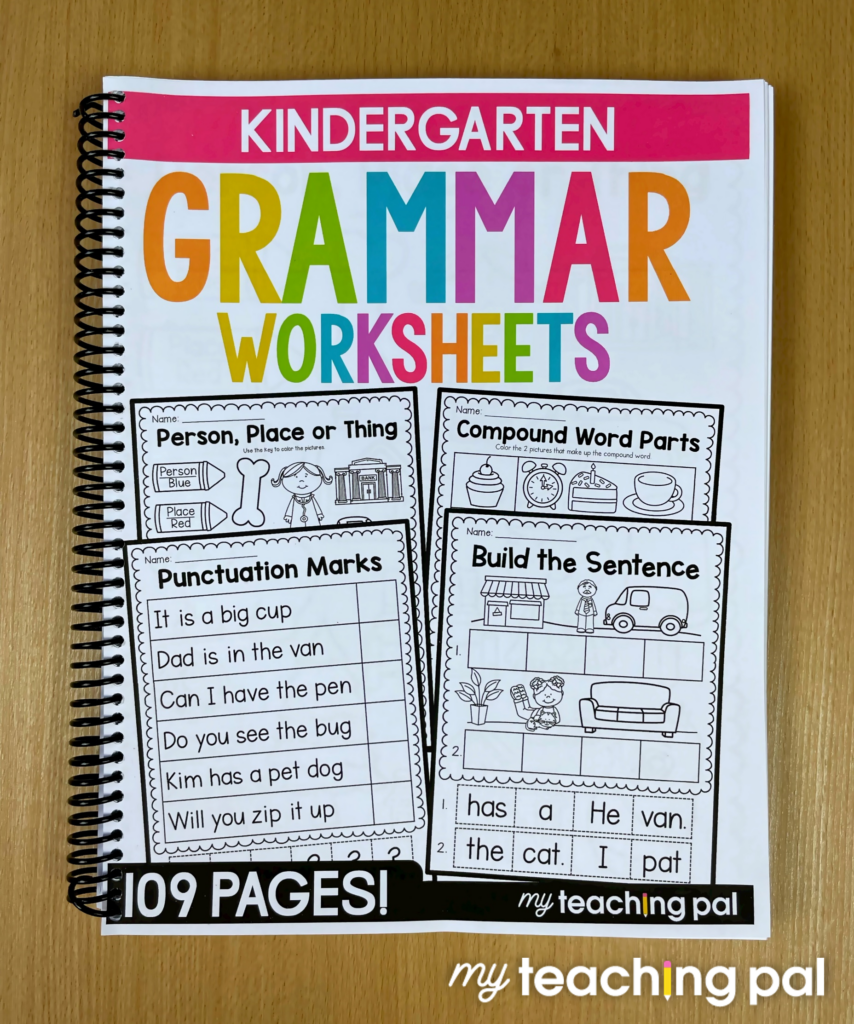
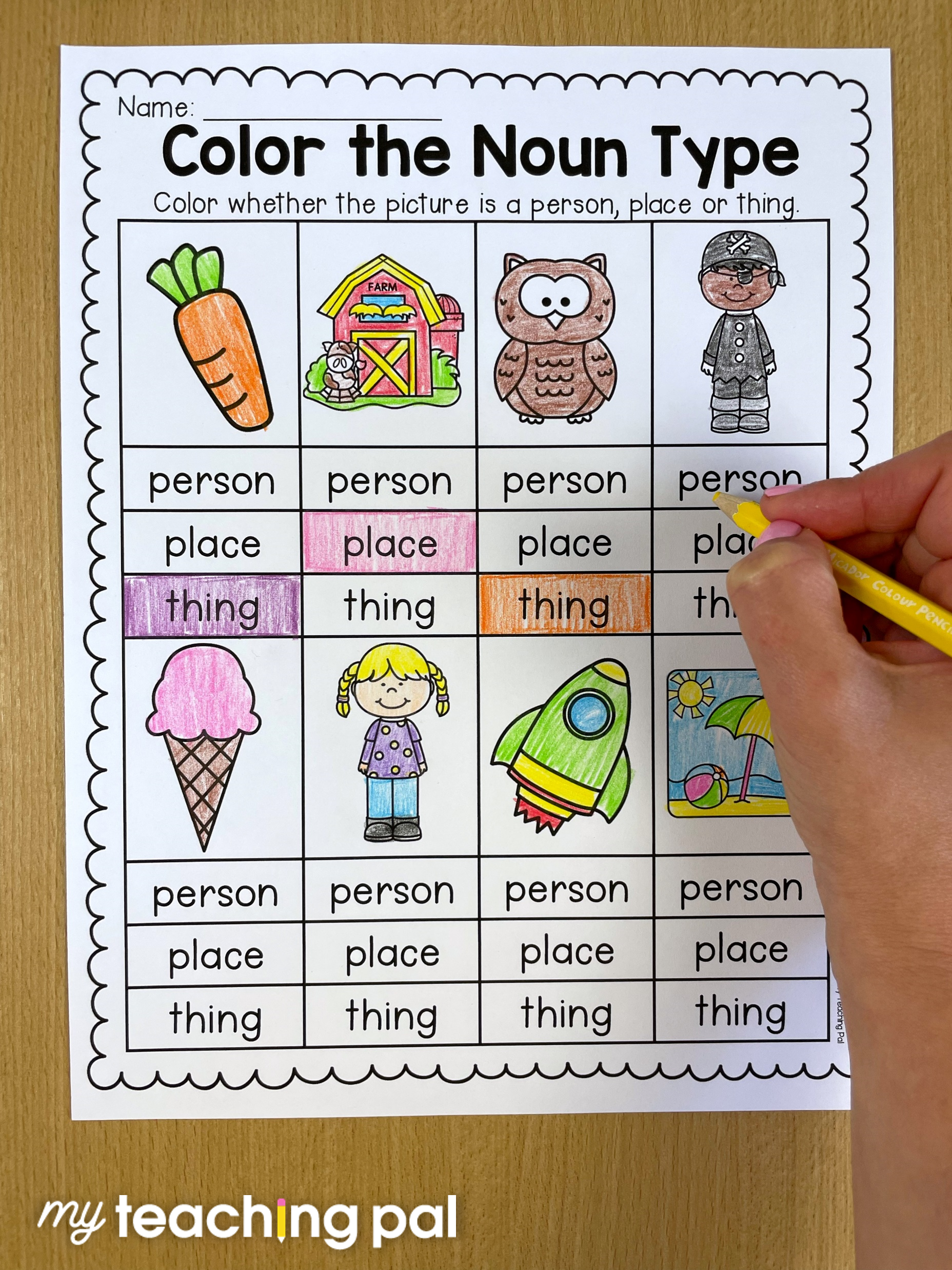
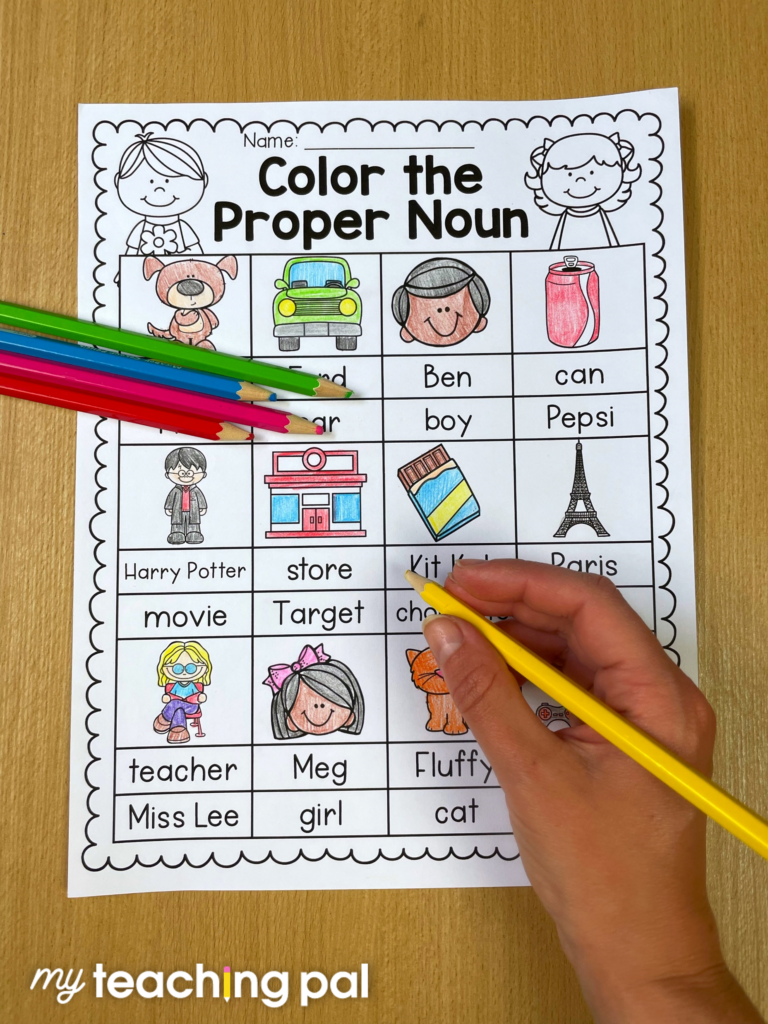
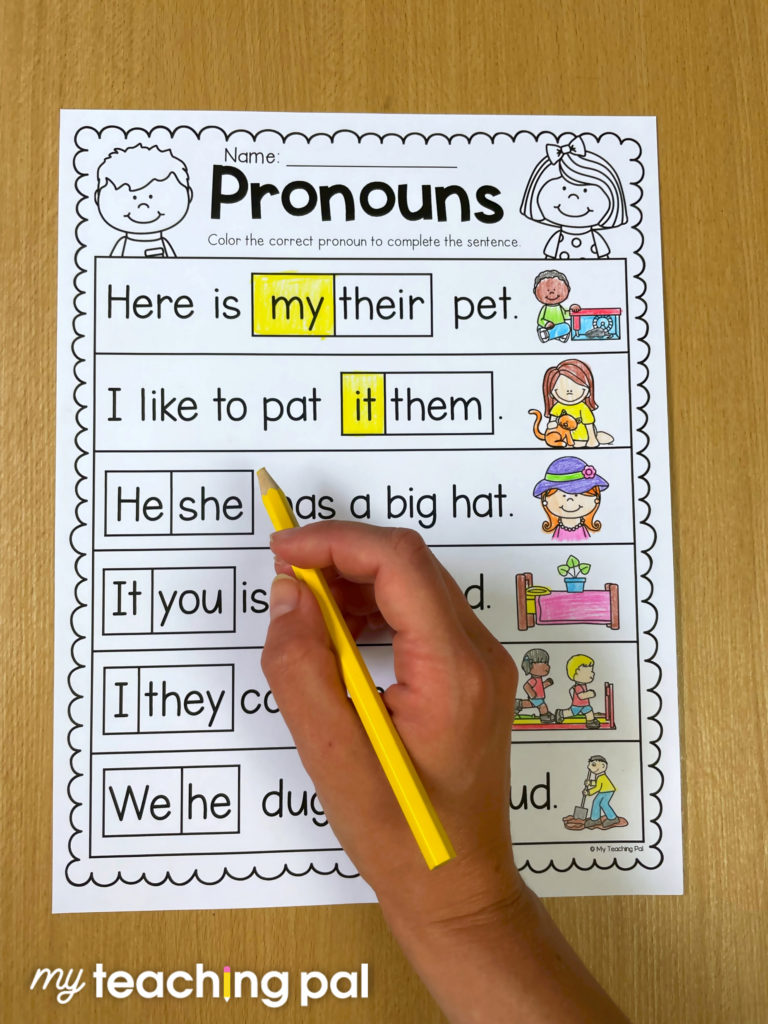
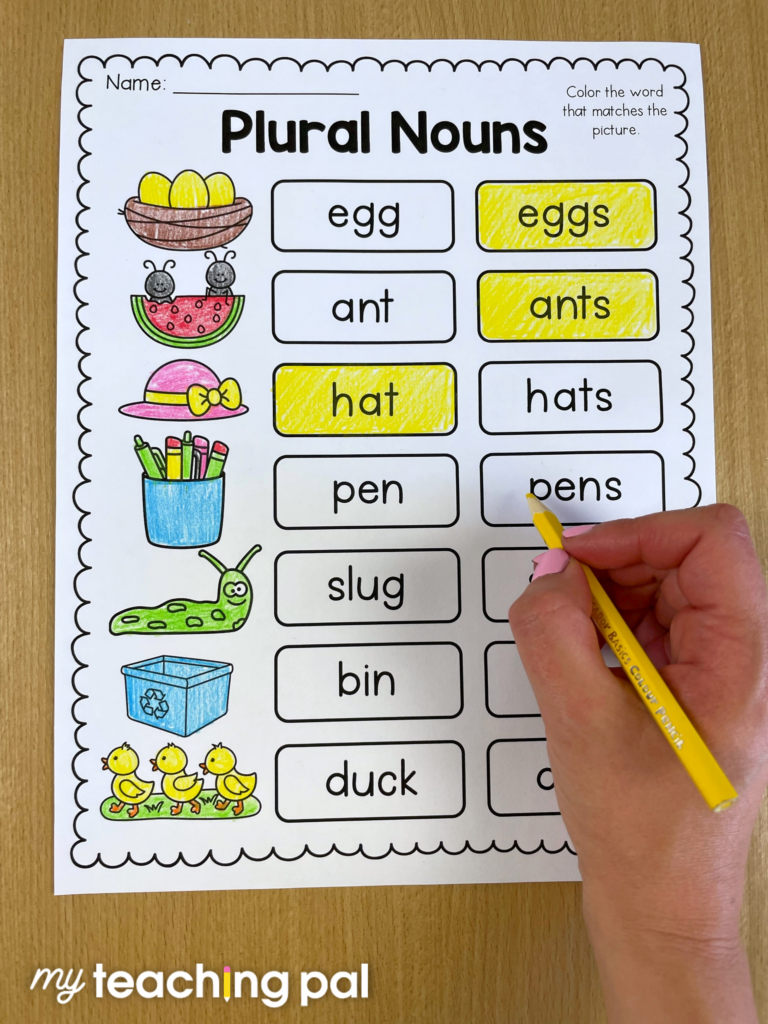

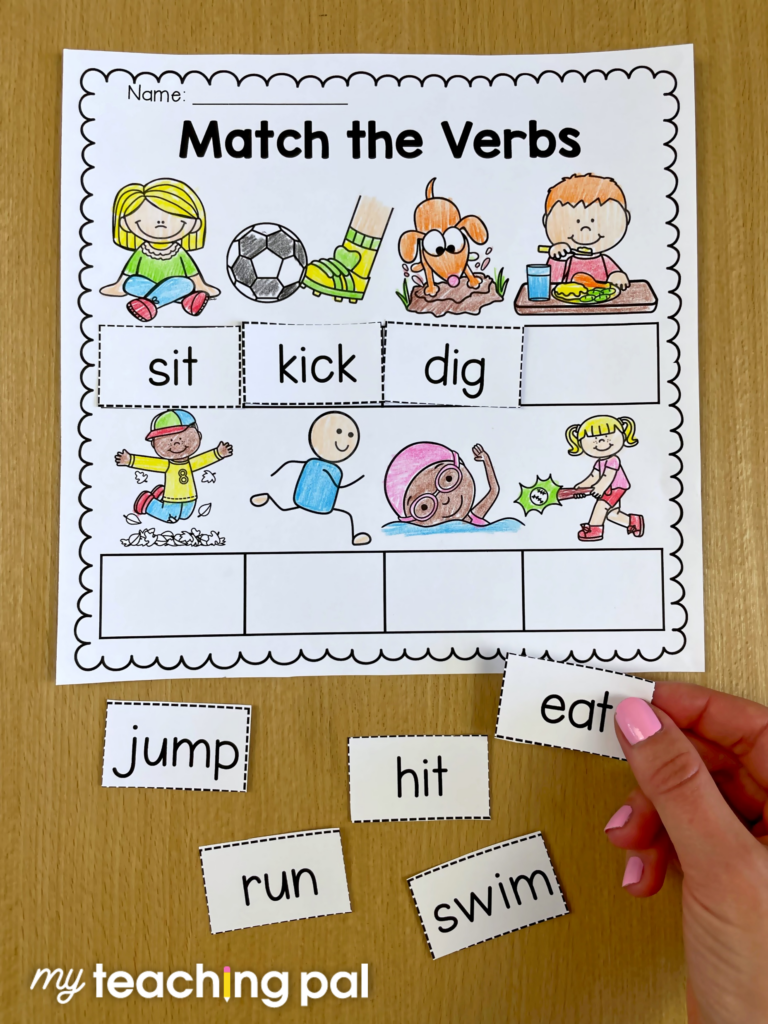
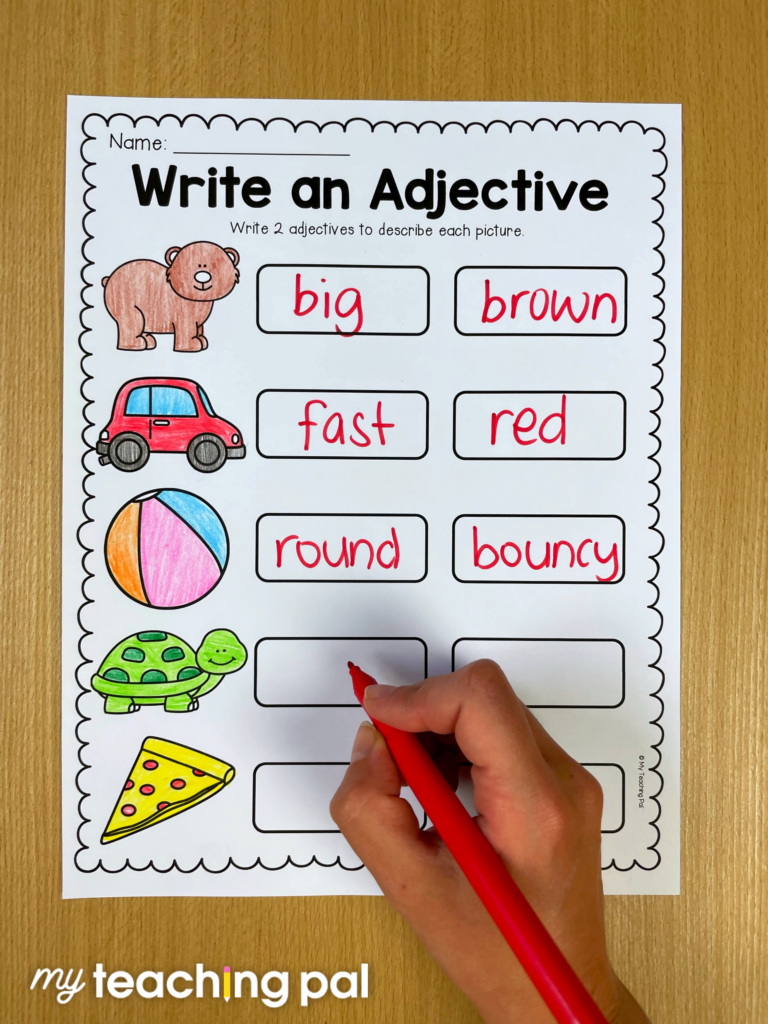
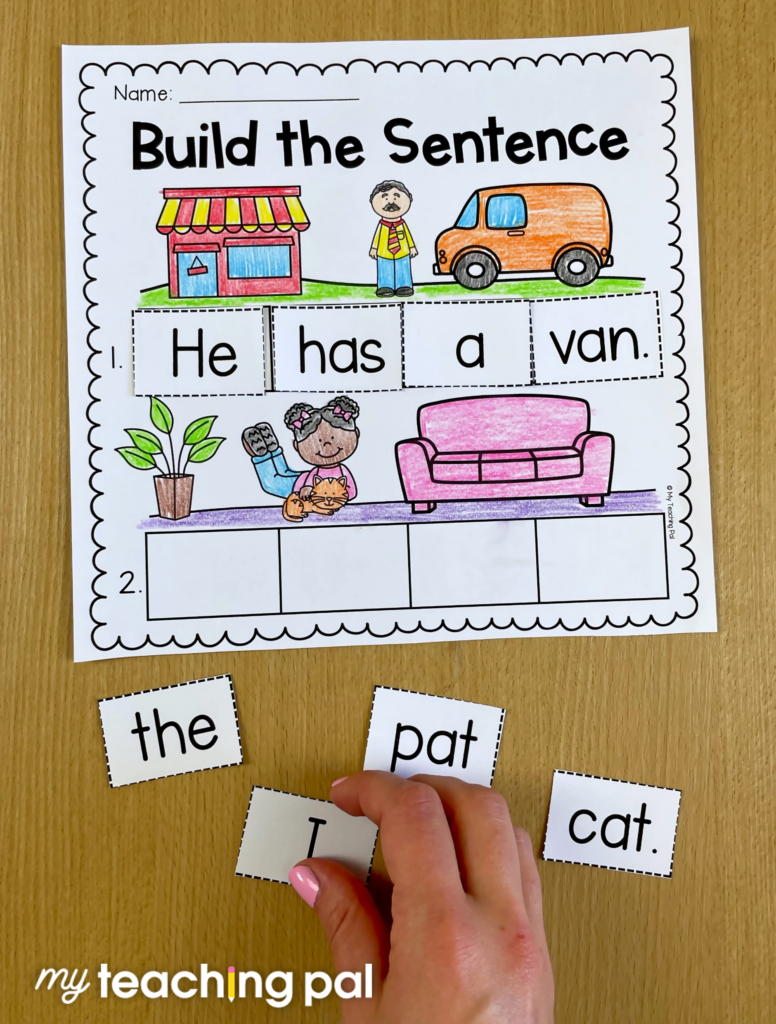
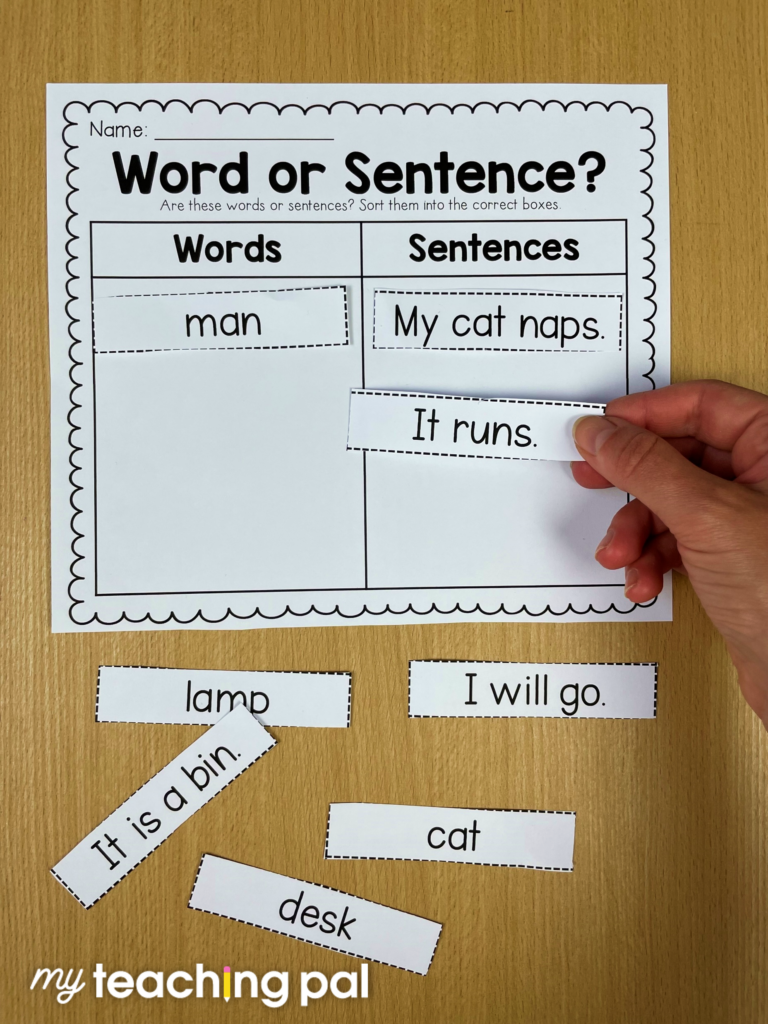

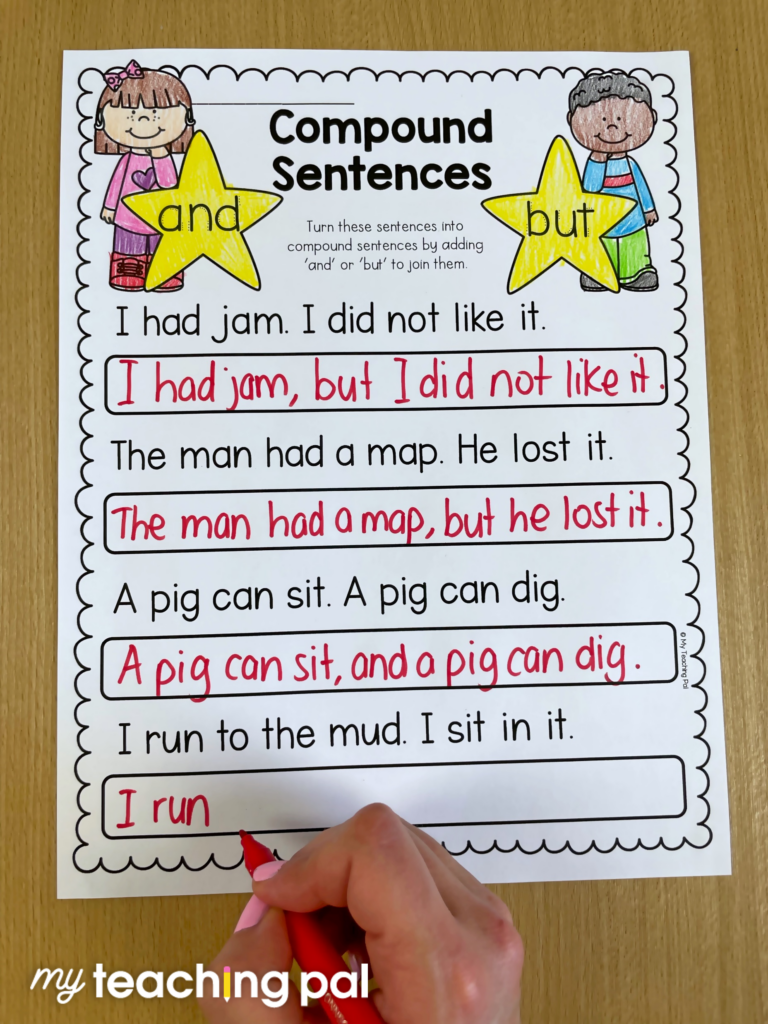
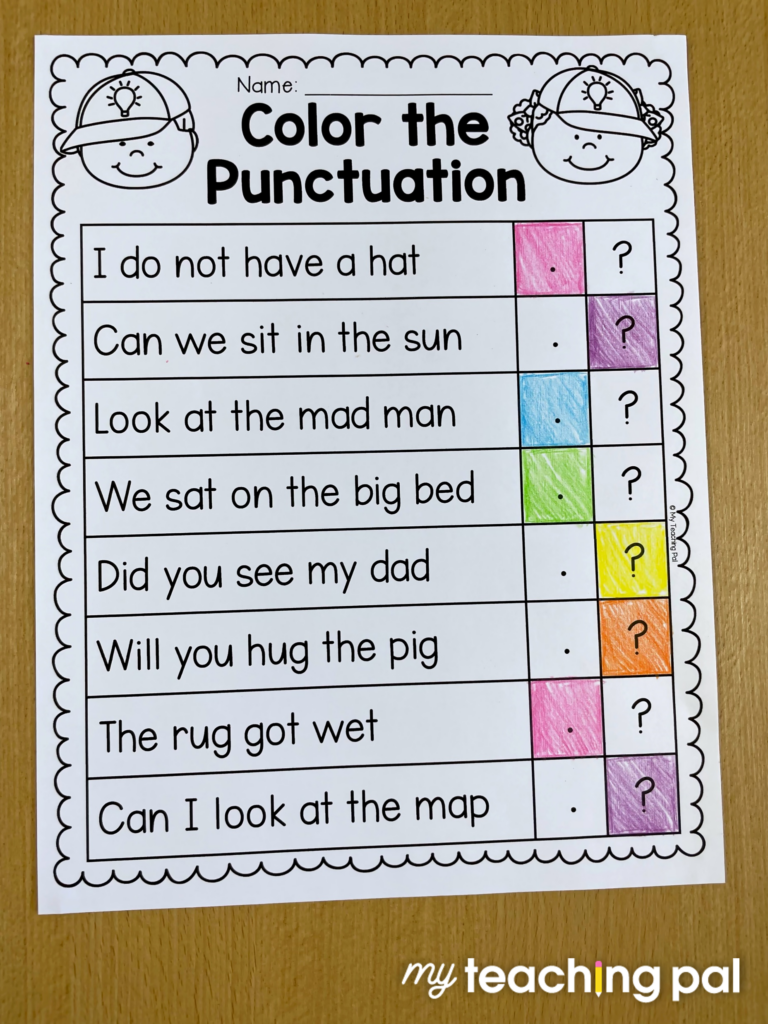

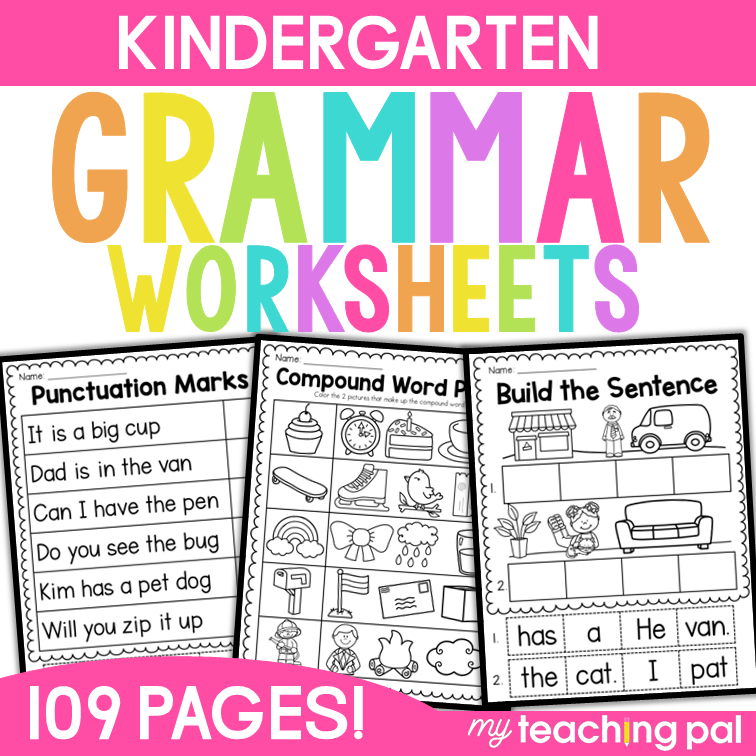




Leave a Comment